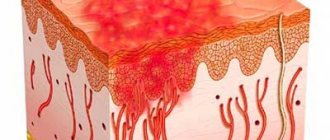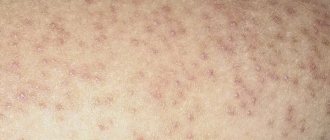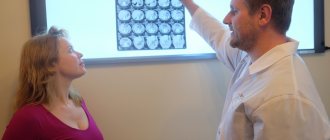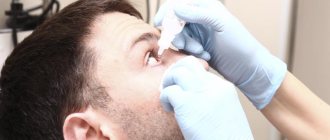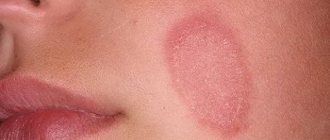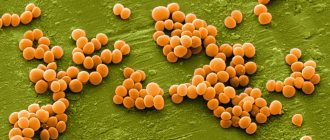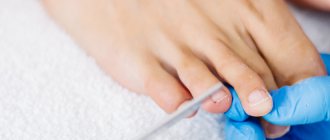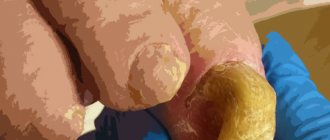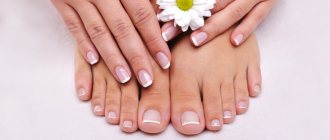Onychorrhexis (ICD code L 60.3) is a type of dystrophy of the nail plate in which it splits along the direction from the free edge to the growth zone. Occurs in women and men. Depending on the cause, onychorrhexis is observed only on one nail or on all of them at once. Cracks can be single or multiple, of different lengths and depths.
What causes?
The causes of onychorrhexis are divided into internal and external. When the body weakens, chronic pathologies, infections, the nail initially grows fragile. It cracks easily, delaminates, breaks off from the free edge. Due to impaired blood flow and chronic diseases, longitudinal splitting of the nail is often found in older people. The older the person, the higher the risks. Aging of the body is the most common reason.
Internal factors include:
- diabetes, thyrotoxicosis, cause metabolic disorders;
- atherosclerosis, lead to a decrease in the lumen of blood vessels, a decrease in blood flow, and the supply of nutrients;
- eczema, psoriasis, cause inflammation, disruption of the nail structure;
- autoimmune diseases (Raynaud's syndrome, vasculitis), damage the walls of blood vessels, nutrition of the matrix, reduce the strength of the resulting plate;
- lack of vitamins and minerals in the body due to malnutrition, eating disorders (anorexia, bulimia) or gastrointestinal diseases that interfere with the absorption of nutrients and change the chemical composition of the plate;
- fungal infection, provokes an inflammatory process, destroys the healthy structure of the nail;
- tumor diseases.
External factors can cause dystrophy:
- injuries received during a manicure or pedicure;
- household damage;
- working with cleaning agents and detergents without protective gloves;
- wearing shoes that don't fit;
- features of the profession: working at a computer with nails tapping on the keyboard, or playing the piano;
- continuous wearing of gel polish or artificial coverings;
- using acetone-based nail polish removers;
- habit of biting nails;
- frequent contact with water, alcohol, solvents, chemicals that dry out and damage the plate;
- Excessive length, improper cutting of nails.
In children, onychorrhexis is caused by trauma, decreased immunity, and previous infectious diseases.
Skin diseases
When working with a client, a manicurist needs to remember that there are various skin diseases, including infectious ones , which must be able to be identified by appearance. Of course, you should not work with people who have infectious (contagious) diseases due to the danger of their spreading over a larger area and becoming infected.
Infectious diseases
Pustular diseases
The most common skin diseases. They are caused by staphylococcal and streptococcal microbes and are characterized by the presence of abrasions, ulcers, and yellow crusts on the skin of the hands and other parts of the body, under which there is purulent discharge.
Boils, folliculitis
Purulent inflammation of the hair follicles (sacs) or sebaceous glands. In these cases, painful red nodes appear on the skin, in the center of which after 3-5 days a purulent “core” appears.
Inflammation of the nail folds
Swelling, redness, and pain in the skin surrounding the nail; purulent contents may be present. This phenomenon is called paronychia (felon)
. It is cured within a short time, but sometimes the participation of a surgeon is required. When treating such a finger, do not touch the inflamed area. You can recommend the client salt baths and heparin-containing ointments and gels to relieve swelling. Vishnevsky's liniment and levomekol can be applied at night under a bandage.
Erysipelas
An acute infectious disease caused by streptococcus. It most often occurs on the legs, but can also affect the skin of the hands. The clinical picture is as follows: bright redness, swelling with unclear borders similar to tongues of fire, pain. The skin is hot to the touch. May have a peripheral ridge.
Mycoses
Diseases caused by different types of pathogenic fungi. Mycoses of the hands are manifested by thickening of the skin, peeling, especially in the skin furrows against the background of slight redness. Often the lesion is limited to raised, scalloped edges. Patients are bothered by itching.
Scabies
A contagious disease caused by the scabies mite. Patients are concerned about itching, especially at night, rashes of small red nodules arranged in pairs, and pinpoint crusts. Typical location: interdigital folds of the hands, wrist area, elbows, as well as the abdomen, genitals, buttocks, and lateral surfaces of the torso.
Human papillomavirus (wart)
Non-inflammatory disease of viral origin. The human papillomavirus most often affects the feet and hands. The disease is transmitted through direct contact or through various objects, so the master should not handle them - there is a risk of accelerated spread. There are different types of warts:
- Vulgar warts
are rough, convex formations with a hard, rounded surface. They are located mainly on the hands.
- Flat warts
are rashes on the back of the hands and in the area of the wrist joints. The shape is different, the color is red-brown, sometimes bluish. - Plantar warts
- located on the soles of the feet, painful, looking like a callus or a small pit. They differ from core calluses in that they are located in soft tissues and are delimited from them by a “side”; they have a structure similar to a bundle of thin tubes.
Herpes
Another viral disease that occurs when working with your hands. It has similar signs as when it appears on the nasolabial triangle (nose, oral and nasal mucosa). Manifestations of herpes can accompany a person throughout his life, disappearing and reappearing when immunity declines. Colds, changing seasons, stress, immune system failures are factors that explain the activation of the virus.
Non-infectious skin diseases
Among non-infectious skin diseases, the most common are hangnails, dermatitis, eczema, neurodermatitis and psoriasis.
hangnail
A hangnail (“hanging nail”) is a common condition of the cuticle in the sinus area. Hangnails appear due to too dry cuticles or as a result of improper cutting or biting off a disturbing piece of skin. The situation can be easily corrected by softening the cuticle with oil. This condition is one of the simplest and most common, but carries the threat of infection with possible consequences in the form of panaritium and subsequent onycholysis.
Dermatitis
Inflammation of the skin, which can be caused by various reasons. They can be of an allergic nature, due to a person’s increased sensitivity to common chemicals (washing powders, cleaning products, varnishes, paints, etc.). Dermatitis can also be caused by ordinary damaging factors (high temperature, cold, concentrated acids and alkalis, etc.). This disease manifests itself as redness, swelling with clear boundaries, burning, pain. There may be small bubbles or blisters in this background. The disease can be treated under the supervision of a dermatologist.
Eczema
A chronic disease, in the mechanism of which the main role is played by allergies to various internal and external irritants. It manifests itself simultaneously with several signs: redness, swelling, itching, the presence of small blisters and abrasions, nodules. Most often, areas affected by eczema become weeping. Subsequently, thickening of the skin and peeling occurs. The disease usually occurs against the background of diseases of internal organs, stress, and damage to the nervous system.
Neurodermatitis
Neurodermatitis (atopic dermatitis) is a genetically determined disease. Occurs in childhood and often recurs. There are areas of redness, thickening, and peeling on the skin of the hands, elbow pits, neck, around the eyes and mouth, and other areas of the skin. The skin pattern is clearly visible. The disease is accompanied by severe itching, so longitudinal abrasions and crusts are visible on the surface of the affected skin. It is necessary to avoid contact of aggressive drugs (alcohols, acetone, alkalis and acids) on the affected area.
Psoriasis
A genetically determined general disease that affects not only the skin, but also joints, kidneys, and liver. It is based on the accelerated reproduction of basal cells of the epidermis, which do not have time to go through all phases of development. The disease can occur at any age. The picture of the disease is as follows: areas of redness, thickening of the skin, covered with silvery scales, appear throughout the skin. They peel off easily, and pinpoint bleeding is found underneath them. The rashes are most often located on the hands, elbows, and scalp.
Pigmentation disorders
Skin conditions associated with pigmentation disorders are not uncommon.
. They can be caused by internal and external reasons, as a result of which an excess or lack of pigment appears in the skin. The function of melanocytes is impaired, the body is more sensitive to ultraviolet radiation. Pigmentation disorders are not a contraindication to nail services.
Well-known examples of such conditions are vitiligo, albinism, chloasma and freckles.
Albinism
Complete absence of pigmentation in the body, including skin, hair, eyes. These people's hair is white. The skin color is pale pink, devoid of any shade. The eyes are pink. When using light-curing materials (gel polish, gel), it is important to apply sunscreen to the skin of the hands up to the middle phalanx of the fingers, avoiding the cuticle area and the nails themselves.
Vitiligo
Characterized by pale pink spots on various areas of the skin.
Chloasma
Large brown spots on the skin of the face, neck, and less often in other places.
Freckles
Small brownish spots on the face and body.
Also, hyper- and hypopigmented spots can remain in place of resolved lesions in some skin diseases, after acne, after incorrectly performed cosmetic procedures, during hormonal changes, etc.
When signing up for a procedure, clients often do not warn the specialist about the presence of a particular disease. To organize your work safely and feel confident even when encountering infectious diseases, we recommend that you read the sanitary standards and rules for processing tools.
What are the symptoms?
The main sign is the presence of longitudinal cracks on the plate, running from the free edge to the center or base of the nail. They look like grooves or furrows. Depending on the cause, there may be one or several cracks, only on one finger or more. Onychorrhexis affects the fingernails and toenails, but is more common on the hands. On the feet, only the big toe is predominantly affected.
What onychorrhexis looks like is shown in the photo of the nail below:
In addition to longitudinal cracks, thinning of the plate, a change in color to yellowish or grayish, and an uneven laminated free edge are also possible. Due to increased fragility, longitudinal splitting is often combined with transverse splitting, which is called onychoschisis.
Vertical grooves on the nails, reminiscent of onychorrhexis, are characteristic of trachyonychia. And their treatment principles are similar. This is a type of onychodystrophy in which the nails become dull, rough, and covered with grooves and scales.
Diagnostics
If you find a plate splitting, contact a podiatrist or dermatologist to prevent the condition from getting worse. If left untreated, the crack will grow and reach the free edge. It will divide the nail into two halves and cause detachment from the bed. In addition, violation of the integrity of the plate opens access to pathogenic pathogens and often leads to bacterial or fungal infectious complications.
The specialist will examine the structure of the plate, assess the severity of the damage, suggest how to treat onychorrhexis of the fingernails or toenails, and how to improve their appearance.
To find out the cause, he will ask the patient about chronic diseases and prescribe additional examinations:
- examination of a nail scraping for fungus;
- general blood test, sugar test;
- consultation with an endocrinologist, gastroenterologist, vascular surgeon;
- microscopic examination;
- examination with a dermatoscope at 10x magnification.
Video: how to avoid splitting nails
- Author: Alexandra
General practitioner at a city clinic. Eight years ago I graduated from Tver State Medical University with honors. Rate this article:
- 5
- 4
- 3
- 2
- 1
(3 votes, average: 5 out of 5)
Share with your friends!
What is the difference between nail micronychia and how to prevent it?
Acrodermatitis: the danger of disease
How to treat?
To treat onychorrhexis, an integrated approach is used, aimed at eliminating the cause, normalizing metabolic processes, and strengthening the structure of the nails. If these conditions are met, treatment gives a good result. True, it takes up to six months, since the nail plate grows slowly, on average by 1 mm per week. The matrix where nails are formed is hidden under the skin of the lower roller, at a distance of 4 mm from the cuticle. It will take 4 weeks just to improve his condition, and to change the plate on his fingers it will take 4 to 6 months.
Treatment is selected depending on the severity of the injuries and the person’s health status. When identifying concomitant pathologies that cause longitudinal clefting, attention is paid to their treatment.
To strengthen nails the following is prescribed:
- massage;
- vitamins, amino acids, minerals;
- medicinal baths;
- drugs to strengthen the walls of blood vessels and improve blood circulation in the extremities;
- physiotherapy (paraffin therapy, ozokerite, mud masks).
Traditional methods and remedies for the treatment of onychorrhexis of nails include masks or baths with natural oils, oil solutions of vitamins, gelatin, as well as moisturizing and nourishing creams. They help strengthen nails and accelerate regeneration processes. But it is better to discuss the safety of their use with your doctor.
In case of deep, long cracks, the plate is reinforced with artificial materials to stabilize it.
Treatment of nail onychorrhexis
If a problem with marigolds is detected in a timely manner, it is recommended to immediately go to the hospital, since they cannot be cured on their own.
Girls usually turn to one of four doctors:
- Dermatologist.
- Pathologist.
- Surgeon.
- Mycologist - if the cause of crack formation is a fungus.
At the appointment, the doctor examines the damaged area and then prescribes tests to determine the type of microorganisms that are spreading in the infected area. Only after passing the tests, treatment is prescribed aimed at the rehabilitation of the manicure.
To speed up the healing process of nails, complex therapy should be carried out. It involves a multifaceted impact on the problem: the use of remedies for the disease, strengthening the surface, following care recommendations to prevent relapse.
Since the disease mainly occurs in the presence of pathologies and inflammatory processes in the girl’s body, drugs are prescribed to eliminate them and normalize the functioning of organs and systems. Only after this are strengthening methods used that gradually rehabilitate the surface.
During treatment, you can use folk recipes - baths, compresses, masks, lotions, adding useful natural ingredients to them: lemon juice, sea salt, baking soda, iodine, potassium permanganate, essential oils.
During the entire treatment and after its completion, follow the instructions:
- Wear rubber gloves when working with chemicals;
- When working on metal or wood, wear thick protective gloves to prevent the introduction of splinters;
- Pay attention to the quality of the manicure;
- Use natural creams, without chemicals;
- Periodically wipe your nails with essential oil before going to bed.
If you follow the doctor's instructions, the defect can be completely cured in 3-4 months.
Care and prevention
When treating onychorrhexis, as well as for its prevention in the future, it is important to properly care for the nails, skin of the hands and feet.
What rules must be followed?
- Wash dishes and use any cleaning agents or detergents only with gloves.
- For manicure, choose high-quality varnishes with a harmless composition; do not use removers containing acetone to remove nail polish.
- Avoid frequent contact with water.
- When treating onychorrhexis, it is not recommended to do a manicure or apply any coatings to the nails other than those prescribed by the doctor. In the future, take breaks from wearing gel polish and artificial nails.
- Take care of your drinking regime and a nutritious diet, including fruits, vegetables, and low-fat protein foods.
- Do not grow your nails too long; periodically get medical manicures and pedicures at podiatry centers.
- Massage your hands and feet daily, moisturize the skin on your arms and legs with nourishing creams.
As a rule, onychorrhexis does not cause pain or inflammation, but you still need to go to a podiatrist with this problem. The specialist will prescribe the correct treatment, which will speed up the recovery of the nail and prevent the development of complications. He will also tell you about the rules of care at home so that splitting or splitting of nails no longer bothers you.
6 0
